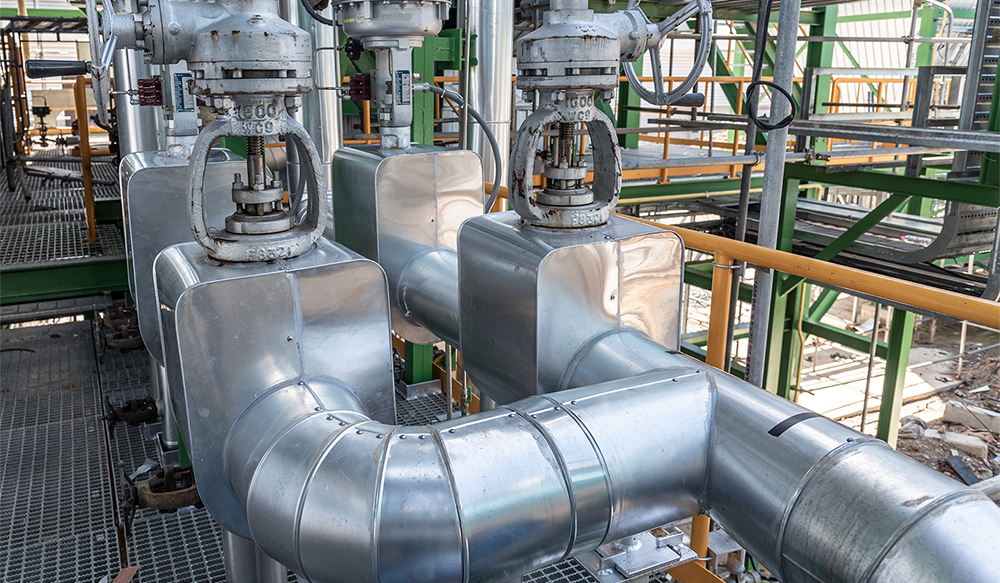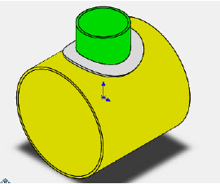
You want to keep your piping system free from weak spots and corrosion. But what happens when you need to add a branch pipe onto your main pipe run? How do you cut into pipes and add new avenues without putting the whole system in danger?
The answer is pipe repads.
Repads can support your pipes in their most vulnerable places. Wondering how? Read on. Here’s how to use reinforcing pads to increase the strength of branch pipes and your entire piping system.
What Are Repads?
 Repads are also known as reinforcing pads. These are doughnut-shaped supports that wrap around the base of your branch joint. Essentially, when you weld a perpendicular branch, sometimes called a stub-in, onto your main pipe, repads add a layer of strength.
Repads are also known as reinforcing pads. These are doughnut-shaped supports that wrap around the base of your branch joint. Essentially, when you weld a perpendicular branch, sometimes called a stub-in, onto your main pipe, repads add a layer of strength.
Wondering how they work?
Before welding, you’ll slide the repad over the branch leg so that it overlaps the places where your new pipe is meeting the run pipe. That way, it will cover the edges of the welded perimeter that are weakened by cutting. Ultimately, these pipe supports reinforce the pipe at weakened, high-stress points.
How Do Repads Support Pipes?
Basically, repads strengthen pipes in two crucial ways:
- Strengthening weak spots: In order to add a branch joint, you’ll need to cut out a hole in your main pipe. Anytime you make incisions in your pipes, the edges of those cuts will produce weak spots. Repads add reinforcements along those compromised areas.
- Reinforcing high-pressure points: Joints and connections tend to be high-stress areas in your piping system. This is especially true in spots surrounding stub-ins because fluids or gases are concentrated in one high-impact spot. Without extra support, these spots could easily burst or leak.
What Are the Advantages of Using Repads?
Overall, your repad reinforces those sliced edges and strengthens the pipe at a high-stress point. But you may be wondering, “Why use a branch pipe and repad at all?”
There are several ways using stub-ins and repads can pay off:
Lower Costs
Repads and stub-ins save money in a few ways. First, you don’t need to buy extra fittings to redirect pipe flow. Second, rather than welding three times around those extra joints, you need to make only a single cut and weld. This saves on labor costs as well as maintenance expenses such as weld inspections.
Fewer Problem Areas
If you want your piping system running at top condition, it’s best to limit cuts and welds as much as possible. Welds are prime spots for corrosion or deterioration from things such as chloride stress corrosion cracking. Of course, you can trust welding pros who use industry standards such as MSS SP-58, but it’s still a good idea to minimize welding whenever you can.
Less Labor
Make no mistake: Installing a branch pipe and repad requires a good amount of specialized labor. You’ll need an expert to make precise cuts and weld the branch and repad onto your main pipe. However, it takes less specialized labor than the alternative: replacing a whole section of piping with a three-way fitting. This alternative takes more measuring and extra welds.
Tips for Repad Installation
Here are some things to keep in mind when you’re installing repads:
- Match up metals: As with other pipe supports, you’ll want to avoid dissimilar metal corrosion to reduce problems in the future. It’s generally good practice to use a repad that consists of the same metal as the main pipe it’s lying on. Otherwise, it could kick off galvanic corrosion and eat away at the metal.
- Take care with cuts: We know—it’s easier said than done, but it’s important to be precise when measuring and cutting. As a rule of thumb, your reinforcing pad should match the thickness of your run pipe.
Discover More Ways to Improve Your Piping System Performance
Overall, when installed right, repads can improve your system’s performance and keep costs down in the long run. And there are more tools to support pipes and lengthen your piping system’s life span.
Want to learn how pipe supports can improve the longevity and performance of your piping system? Read our Complete Guide to Pipe Restraints and find out.






